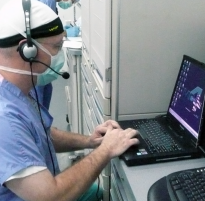| Editor’s Note: Cyberattacker activity continues to branch out into new territories. Payers and Healthcare networks must stay ahead of trends to protect against cybersecurity threats. Click HERE for how BHM develops high level protection for your data, addresses the c-suite cyber-security concerns, and proves it with HITRUST CSF. |
 The health IT workforce appears to be growing in hospitals, according to the Healthcare Information and Management Systems Society’s 2019 U.S. Leadership and Workforce Survey.
The health IT workforce appears to be growing in hospitals, according to the Healthcare Information and Management Systems Society’s 2019 U.S. Leadership and Workforce Survey.
HIMSS collected feedback from 269 health IT leaders for the survey. The majority of the participants — 232 — worked at healthcare provider organizations, while the remaining 37 worked at health IT vendor or consulting organizations.
Three survey findings on the state of the health IT workforce:
1. Here’s how participants responded when asked about the current health IT workforce at their respective organizations:
· Hospitals: 28 percent said their organization is fully staffed, while 63 percent reported having open positions to fill
· Non-acute setting: 56 percent said their organization is fully staffed, while 26 percent reported having open positions to fill
· Providers: 36 percent said their organization is fully staffed, while 52 percent reported having open positions to fill
2. Here’s how participants responded when asked to predict their respective organizations’ health IT workforce size in one year:
· Hospitals: 37 percent said they expect their workforce to increase, while 38 percent think it will stay the same
· Non-acute setting: 26 percent said they expect their workforce to increase, while 51 percent think it will stay the same
· Providers: 34 percent said they expect their workforce to increase, while 42 percent think it will stay the same
3. The report authors concluded that differences in staffing growth trajectories between hospitals and non-acute providers have the potential to create different workplace cultures: a fast-paced environment in hospitals with high growth areas, and a fairly stable environment in non-acute organizations with limited opportunities. These differences will likely attract health IT workers with different needs and expectations.
To download HIMSS’ report, click here.
Cyberattacker activity continues to branch out into new territories. Payers and Healthcare networks must stay ahead of trends to protect against cybersecurity threats. Click HERE for how BHM develops high level protection for your data, addresses the c-suite cyber-security concerns, and proves it with HITRUST CSF.
